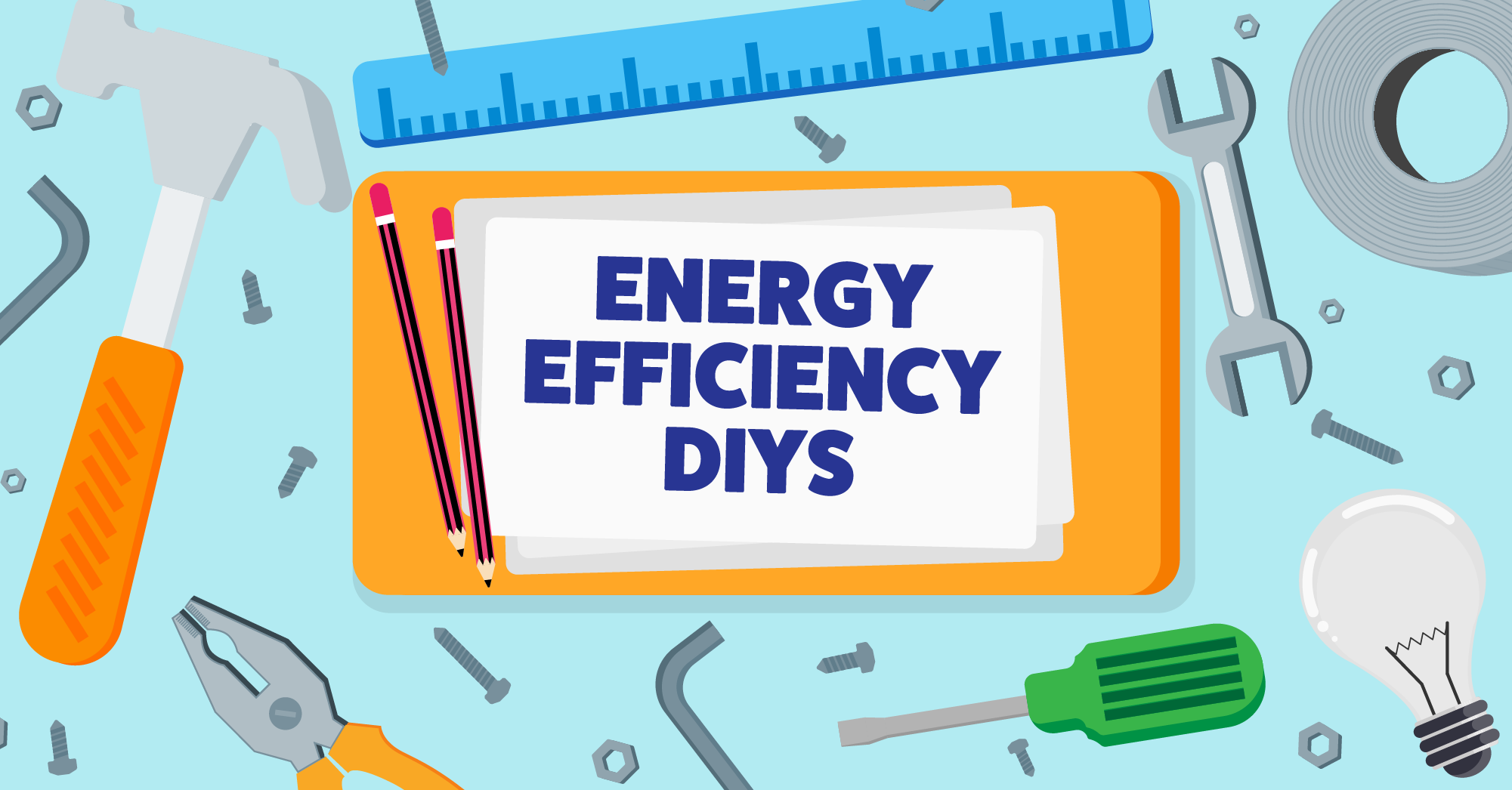This year, all of us are searching for small ways to save on energy. From simply turning off our lights when we’re not using them, to making big investments in new boilers or heating systems, there are plenty of ways—big and small—to make a change to your energy consumption.
When you are already doing what you can, and aren’t ready for any expensive investments, there are still various DIY projects you could undertake in order to further cut back on your energy usage.
In this article we look at just 9 projects—ranging from the easy to the more advanced, experienced DIYer—at how you can put your physical talents to make your home more energy efficient.
-
Swap for LEDs
The simplest of all DIYs—changing a light bulb. This is a small but extremely effective way of saving on your home energy and money.
A typical home using halogen bulbs uses €378 a year to run, while one using LED alternatives uses roughly £146. That is a difference of around €232 per year, just on light bulbs alone, for a simple project you can do yourself in less than an afternoon.
Simply remember to turn off your light’s energy source before unscrewing the bulb and replacing it with the LED to avoid any accidents.
Savings: €232 per year
Investment: €30
-
Fit a water tank jacket
The difference between an uninsulated hot water tank and a well insulated one is that the latter saves around €150 a year. Given that a water jacket is around €20, this means that keeping your water tank or boiler extra cosy is a must for the winter season if you want to trim your bills.
Your typical water tank jacket is reasonably easy to fit, and is therefore a project for even DIY beginners. The exact instructions will depend on the jacket you purchase, but typically, it involves unrolling your jacket, giving it time to expand, and then placing the panels around the tank. After this, you will secure it with cords or fixing tapes, so that the tank is wrapped but the electric cables will be uncovered.
Savings: €150 per year
Investment: €20
-
Insulate your attic
Roughly 25% of the heat produced by your boiler will escape through the roof of your home, so it’s important to trap as much of it as possible. We do this by adding insulation to our roof space or attic.
In general, it’s recommended that your insulation be around 270mm or thicker. Depending on your exact materials, a roll which covers 8m2 can cost as little as €20. Subject to the overall size of your attic, you can usually insulate your attic for less than £100.
This particular project is slightly more advanced, and should only be done yourself if you are sure that your attic space has no additional problems which might require a professional (such as damp or condensation problems). See the likes of B&Q for more detailed instructions on doing this yourself.
Savings: €300 per year
Investment: €20 per roll
-
Fit insulation strips around windows and doors
Sometimes there are small cracks and spaces around our doors and windows. Heat can escape through these and make our home harder to heat and keep warm. An easy fix to this is to fit insulation strips around our windows and doors—anywhere heat may escape.
Applying the strips is relatively simple, depending on the exact brand you purchase. Typically, you wipe down the area you will be applying the strip to so that it is clean and dust free, then cut the strip to the length you need. After this, peel off the back film and stick the strip down.
Savings: £60 per year
Investment: £10
-
Block letterbox draughts
Similarly, letterboxes can be annoying little escapes for your heating, too. Obviously, you don’t want to block your letterbox for important parcels and envelopes, but you also don’t want it stealing the warmth from your hallway either.
An easy DIY is to fit a letterbox draught excluder. These are typically around €5-10 and come with fittings, so that you simply place the excluder over your original letterbox. These might have a heavier flap, thick bristles or other means to stop heat moving through but still allow letters.
Investment: €5
-
Insulate hot water pipes
Like your hot water tank, your hot water pipes can use a little help keeping their heat in. Similarly to that DIY, you will want to purchase foam tubes of insulation (found at most DIY stores) and set about fixing them around the pipes between the tank and the boiler. If you speak to an expert in the hardware store where you purchase your equipment, you should get some advice on the exact sizing and material of the insulation you choose.
Savings: €3 per year
Investment: €1.75 per metre
-
Install water-saving shower head
A water-saving shower head typically works by regulating the flow of water through the shower head or adding air to the water, to give a high quality shower without the same resources. These can help to cut back on energy and water usage by up to 50%—and also trim up your bills too.
These are typically inexpensive, ranging from around €15 to €50 for more expensive models, and are easily screwed onto your current shower head fitting.
Investment: £15
As with all DIY projects, as much as the final result matters, so does personal safety. Don’t undergo any project without the proper tools, safety equipment, and professional instruction. Obviously, many of our listed DIY projects are very simple and beginner friendly, but for the other more advanced projects, do be realistic with your own skill level. A well done job by a professional may be more expensive upfront, but a poorly finished DIY won’t achieve the same energy efficiency results you are searching for.
Want to save more money?
While these DIYs are great, there is a faster and cheaper way to save potentially hundreds of pounds off your annual energy bill: switching energy deals.
On average, Power to Switch customers save €470 on their energy deal when they switch. Simply submit your details to our handy comparison tool to find out how much you could save in just a few minutes. It’s cost-free, risk-free and requires zero DIY experience, too!







